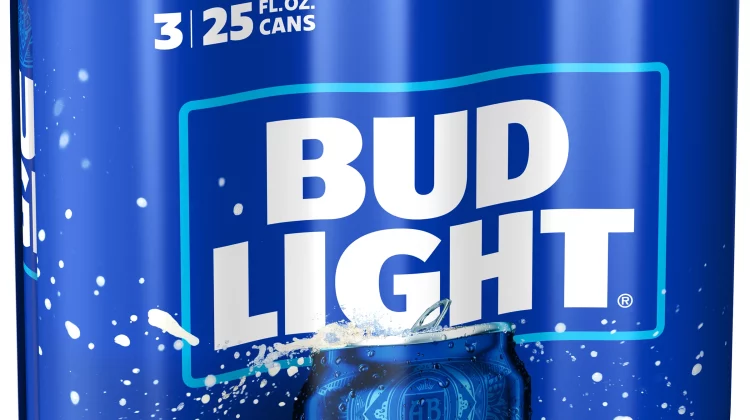
Counting carbs in beer has become a standard practice for many, particularly those mindful of their dietary intake. However, the question arises: Should you also be concerned about the sugar content in beer?
Contrary to popular belief, beer does contain sugar, albeit not as an added ingredient. It naturally forms during the brewing process when yeast ferments the grains used in brewing. This sugar content, often referred to as beer gravity, impacts the final composition of the beer.
While sugar isn’t typically listed on beer labels due to regulatory reasons, its presence is significant. Beer’s sugar content is influenced by various factors, including the initial gravity of the wort, the type of yeast used, and any additional ingredients like honey or corn syrup.
But just how much sugar is in beer? While precise figures aren’t always readily available, some popular beers’ carb and sugar content have been compiled:
- Bud Light: 4.6 grams of carbs, 0 grams of sugar
- Budweiser: 10.6 grams of carbs, 0 grams of sugar
- Coors Banquet: 11.7 grams of carbs, 0 grams of sugar
- Coors Light: 5 grams of carbs, 1 gram of sugar
- Heineken: 11.4 grams of carbs, 0 grams of sugar
- Miller Lite: 3.2 grams of carbs, 0 grams of sugar
Interestingly, non-alcoholic beer tends to have higher sugar content, while light beer often contains more sugar than regular beer. This correlation between carbs and sugar is evident across different beer types.
Should one worry about the sugar in beer? Generally, beer’s sugar content remains relatively low. While it’s prudent to be aware of sugar intake, particularly for those with specific dietary concerns, for most beer drinkers, it’s unlikely to be a significant issue. So, while keeping an eye on carbs is essential, beer need not be treated as a sugary indulgence.
Calories
A standard 12-ounce serving of Bud Light contains 110 calories. This low-calorie content is one of the main reasons why Bud Light is a popular choice among those watching their calorie intake.
Carbohydrates
Bud Light has 6.6 grams of carbohydrates per 12-ounce serving. This low-carb content also contributes to its appeal as a lighter beer option.
Fat
Bud Light is a fat-free beverage, making it an excellent choice for individuals aiming to minimize their fat intake while enjoying a refreshing drink.
Alcohol Content
With an alcohol by volume (ABV) of 4.2%, Bud Light offers a lighter option for those seeking to moderate their alcohol consumption compared to some other beer varieties.
Protein
Each 12-ounce serving of Bud Light contains approximately 0.9 grams of protein. While this isn’t a significant amount, it’s worth noting that this beer does contain some protein.
How much sugar is typically in beer?
The sugar content in beer varies depending on factors like brewing process, ingredients, and beer type. Generally, most beers contain a modest amount of sugar derived from fermentation.
Ingredients
Bud Light’s main components include water, barley malt, rice, and hops. The inclusion of rice contributes to Bud Light’s distinctive light and crisp taste profile.
Gluten Content
Bud Light is not suitable for individuals following a gluten-free diet, as it contains barley malt, a significant source of gluten. Those with celiac disease or gluten sensitivity should avoid Bud Light and choose a gluten-free beer alternative.
Sugar Content
A 12-ounce serving of Bud Light contains 6 grams of sugar, primarily derived from the natural sugars present in the malt barley used during the brewing process.
Sodium Content
In each 12-ounce serving of Bud Light, there are 2 milligrams of sodium. This amount is relatively low, particularly when compared to sodium levels found in other beer varieties.
Cholesterol Content
Bud Light is a cholesterol-free beverage, making it a heart-healthy choice for those looking to reduce their cholesterol levels.
B-Vitamins
Beer, including Bud Light, contains small amounts of B-vitamins such as riboflavin, niacin, and folate. However, the amounts are not significant enough to make a meaningful impact on your daily vitamin intake.
No Artificial Flavors or Colors
Bud Light does not contain any artificial flavors or colors, which is a plus for those who prefer more natural food and drink options.
Why is it important to know the sugar content of beer?
Understanding the sugar content helps individuals monitor their carbohydrate intake and make informed dietary choices. It can also be relevant for those managing conditions like diabetes or seeking to reduce sugar consumption.
Do lighter beers contain less sugar?
Lighter beers often have lower sugar content compared to their full-bodied counterparts. However, there can still be variations among different brands and styles.
How can I find out the sugar content of a specific beer?
While sugar content is not always listed on beer labels, you can research online resources, contact the brewery directly, or refer to beer databases and nutritional guides for approximate values.
Does the alcohol content of beer correlate with its sugar content?
Generally, as yeast ferments sugars during the brewing process to produce alcohol, higher alcohol content in beer may indicate lower residual sugar levels.
Are there any health concerns associated with consuming sugary beers?
Excessive consumption of high-sugar beers may contribute to weight gain, increase the risk of dental issues, and potentially impact blood sugar levels, especially for individuals with diabetes or insulin resistance.
Are there low-sugar or sugar-free beer options available?
Some breweries offer low-carb or sugar-free beer alternatives, often marketed as “light” or “diet” beers. These options may have reduced sugar content compared to traditional beers.
How can I enjoy beer while managing sugar intake?
Opting for lighter beers, consuming in moderation, and balancing beer consumption with a well-rounded diet rich in whole foods can help manage sugar intake while still enjoying the occasional beer. Additionally, consulting with a healthcare professional or nutritionist for personalized advice is advisable.
